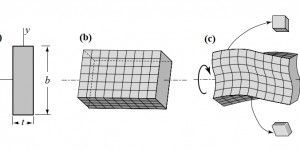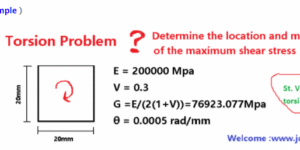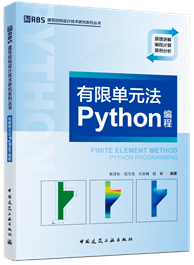[资料总结] 自由扭转应力计算公式 (约束扭转与自由扭转) (Formula for calculating free torsional stress)
实干、实践、积累、思考、创新。 自由扭转应力 的几个公式和变量很多时候容易混淆,总结如下: (1)圆形或者管形截面(Circular section) (2)开口薄壁截面 (thin-walled open section) (3)闭口薄壁截面 (thick-walled closed section) 之所以有差异,主要原因是不同截面的特性差异造成的。这其中包括以下一些概念: (1)翘曲 Warping 截面发生扭转的过程中,截面沿着截面自身平面外发生的变形称为翘曲( Warping)。 (2)约束扭转和自由扭转。 截面发生扭转过程中,挠曲不受约束的情况,称为自由扭转,挠曲如果受到约束,就称为约束扭转。 (3)不同截面的扭转特性 圆形或管形截面(Circular section),由于是极对称的,扭转过程中截面均不发生翘曲。因此,对于圆形或环形截面,前面给出的扭转应力公式也不存在约束扭转还是自由扭转之分。或者更准确说,自由扭转或非自由扭转是针对有翘曲的情况来说的,没翘曲,就没有自由扭转或者约束扭转之分。 开口薄壁截面 (open thin-walled section),抗扭刚度较弱(相对其他两类截面),自由扭转情况下,截面翘曲量大,约束扭转和自由扭转下的特性差异较大,扭转应力也相差较大。约束扭转下,截面除了产生纯扭剪应力,还能产生由翘曲引起的扇性剪应力,因此扭转应力不能仅用自由扭转应力公式评估扭。 闭口薄壁截面 (closed thin-walled …


